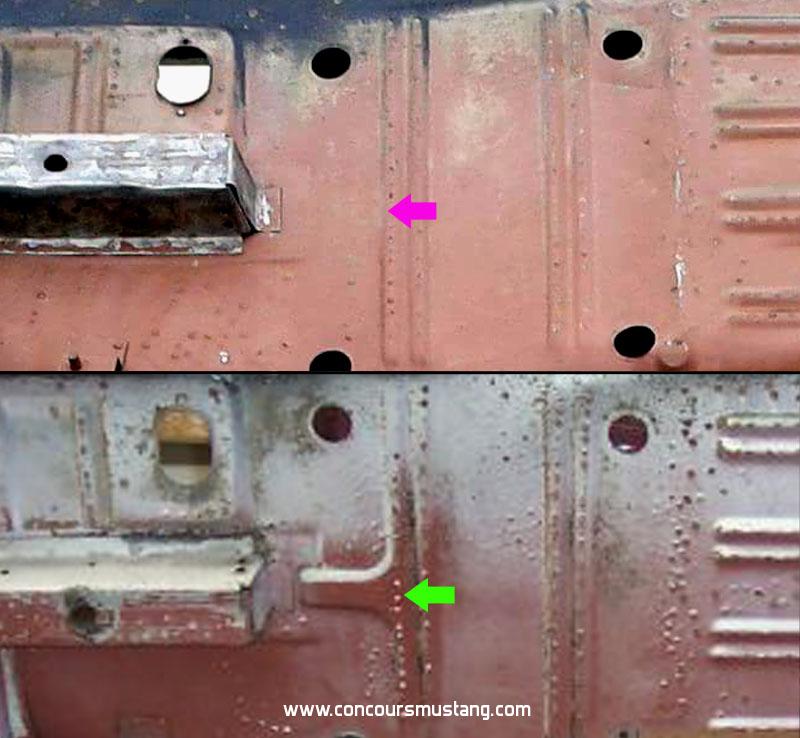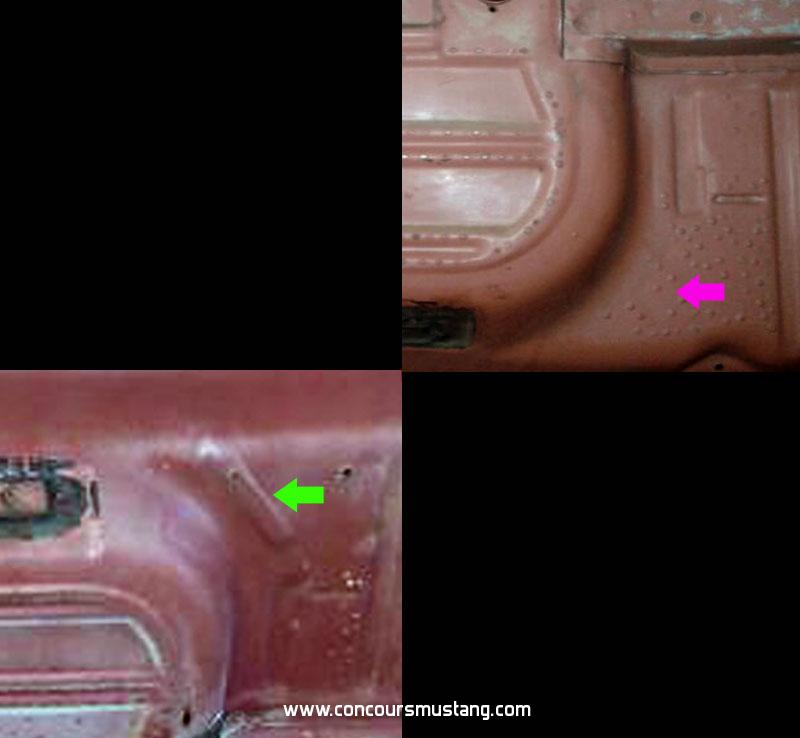Often some of us keep a few details to ourselves so that they can be used to help determine original from rebuilt cars or even real verses fakes or rebodies. When I ran across this detail, during a somewhat recent study of a car and looking for data and discussing it with a few others, I felt it was better to share this with the community so that restorers would hopefully make better choices when choosing replacement floors for their rusty projects and since it is such a visible feature judges would be aware of it and act accordingly. Some may not be happy with my decision to share but felt this was the right course in this situation.
What am I referring to is a change in the main floor stamping pattern between earlier and later Mustangs and Shelby's. So far this differences include two pretty visible and quickly noticeable areas.
First at the front of the floor pan directly behind where the front frame rail attachment point end we have two pairs of ribs formed into the panel for straight and rigidity. The first pair are straight on earlier cars as they were in 65-66 floors. On the later cars the first rib in that first pair was reshaped into somewhat of a T for additional support and rigidity. Both styles are shown in the picture below. Top example is the earlier version - lower the later.

At the rear of the same panel in the raised (rear seat platform) section an addition rib was added to the later floors (appears to be have been included at the same time as the forward change) at a slight angle near the corner bend in the panel as shown below. Top example is the earlier version - lower the later.

Hope this helps others when making choices for their cars and projects.
Currently I'm going through data to try and figure out the possible change over range for the plants I can. San Jose will be the easiest since we have allot more data (real build dates) than other plants